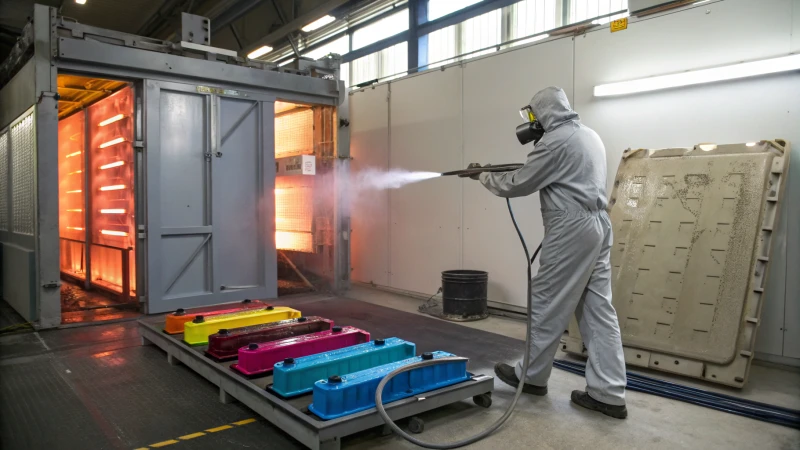Aluminum Profile Packaging and Transportation: Ensuring Safe Delivery to Customers

Navigating the logistics of aluminum profile transportation requires meticulous attention to detail. Whether you’re a manufacturer, distributor, or end-user, ensuring these products reach their destination undamaged is paramount.
To ensure the safe delivery of aluminum profiles, prioritize robust packaging design using quality materials like foam and wooden pallets, and choose the most appropriate transport mode. This minimizes risk of damage from impacts, friction, or environmental factors during transit.
In this comprehensive guide, we delve into the key strategies for effective aluminum profile packaging and transportation. From selecting protective materials to leveraging customer feedback for continuous improvement, discover how to enhance your delivery process and exceed customer expectations.
Foam is essential for aluminum profile packaging.True
Foam provides cushioning, reducing impact damage during transportation.
Wooden pallets increase the risk of aluminum profile damage.False
Wooden pallets stabilize loads, preventing damage from movement or falls.
What Are the Best Materials for Packaging Aluminum Profiles?
Choosing the right packaging materials for aluminum profiles is crucial to ensure their safety during transit. The best materials offer protection against damage, environmental exposure, and handling mishaps, maintaining product quality from manufacturer to end-user.
The best materials for packaging aluminum profiles include foam, EPE, wooden pallets, and moisture-resistant films. These materials provide shock absorption, surface protection, and moisture resistance, essential for safe transportation.
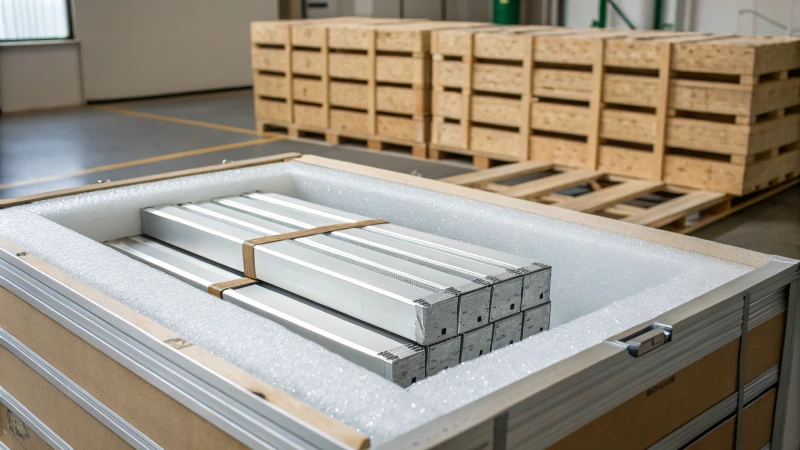
Foam and Expanded Polyethylene (EPE)
Foam and EPE are excellent choices for protecting aluminum profiles due to their shock-absorbing properties. Foam wraps or sheets can cushion profiles against impact during transport, while EPE offers flexibility
and resilience, ensuring that even irregularly shaped profiles are snugly protected.
Wooden Pallets
Wooden pallets are essential for bulk packaging. They provide a stable base that prevents profiles from shifting during transport. Additionally, wooden crates can be customized
for various profile sizes, ensuring a secure fit. This method is ideal for heavier profiles that require more robust handling.
| Material | Benefits |
|---|---|
| Foam | Shock absorption, lightweight |
| EPE | Flexible, durable |
| Wooden Pallets | Stability, customizable sizes |
Moisture-Resistant Films
Aluminum profiles are susceptible to corrosion when exposed to moisture. Using moisture-resistant films or papers can prevent such damage, especially during sea transport. These films act as a barrier against humidity, protecting the profiles from environmental elements.
Bubble Wrap and Plastic Films
For smaller or medium-sized profiles, bubble wrap is an effective option. It provides cushioning and abrasion resistance while being lightweight. Plastic films can also be used for an additional layer of protection,
shielding the profiles from dust and minor scratches.
Consideration should be given to the specific needs of the profiles being transported. Depending on the environment and transport method, a combination of these materials may be required to ensure optimal protection.
Foam provides shock absorption for aluminum profiles.True
Foam absorbs impact, protecting profiles during transport.
Wooden pallets are unsuitable for heavy aluminum profiles.False
Wooden pallets offer stability, ideal for heavy profiles.
How Does Packaging Design Affect the Safety of Aluminum Profiles?
Proper packaging design is crucial for ensuring the safe transportation and delivery of aluminum profiles. It prevents damage from physical impacts, environmental factors, and improper handling.
Packaging design affects the safety of aluminum profiles by providing protection against physical damage, corrosion, and contamination during transport. Key elements include protective materials, moisture barriers, and secure packaging methods.
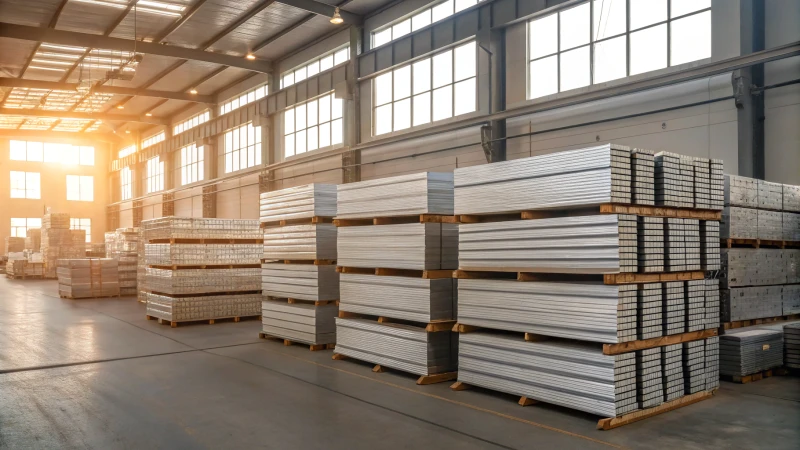
Protective Materials and Their Importance
Aluminum profiles require robust protective materials to shield them from potential damage during transport. Materials like foam and EPE absorb shocks and minimize scratches. For profiles with sensitive finishes, scratch-resistant
options are critical to maintain surface integrity.
| Material Type | Benefit |
|---|---|
| Foam | Absorbs shock |
| EPE | Lightweight, shock-absorbent |
| Wooden Pallets | Provides stability and protection |
Moisture and Corrosion Protection
Exposure to moisture can lead to corrosion of aluminum profiles, especially during sea transport. Packaging solutions should include moisture-resistant paper or films to guard against humidity and environmental damage. These
materials ensure that profiles remain dry and corrosion-free.
Optimal Packaging Design
The size and design of the packaging are essential for securing aluminum profiles. Ensuring that they are tightly packed prevents movement and reduces friction, minimizing the risk of damage. A well-designed package also
reduces shipping costs by optimizing space.
Common Packaging Methods
- Wooden Crate Packaging: Ideal for heavy profiles, providing robust protection. Also useful for labeling.
- Plastic Film and Bubble Wrap: Suitable for smaller profiles, offering moisture protection.
- Pallet Packaging: Ensures stability for bulk shipments, ideal for large-scale transport.
Collaboration with Logistics Providers
Partnering with logistics companies experienced in metal transportation can enhance safety. By communicating specific packaging requirements in advance, you can ensure proper handling during transit, reducing risks
associated with impacts or mishandling.
Foam is used to absorb shock in aluminum packaging.True
Foam materials absorb shocks, minimizing damage to aluminum profiles.
Wooden pallets are used for moisture protection.False
Wooden pallets provide stability, not moisture protection for profiles.
Why Is Moisture Control Crucial During Transportation?
Moisture control during transportation is vital for preserving product quality, reducing damage risks, and ensuring customer satisfaction. Without it, goods like electronics, food, and pharmaceuticals may suffer irreparable harm, leading to financial losses.
Moisture control is crucial during transportation to prevent damage caused by humidity and condensation. It protects products from corrosion, mold, and spoilage, ensuring they arrive in optimal condition, which is vital for sensitive items.

The Effects of Moisture on Different Products
Moisture can wreak havoc on a range of products during transit. For example, electronics are highly susceptible to moisture damage, which can lead to malfunctions. Similarly, food products exposed to high humidity levels may experience spoilage and mold growth. Pharmaceuticals, which require precise storage conditions, risk losing efficacy if moisture isn’t controlled.
| Product Type | Potential Damage |
|---|---|
| Electronics | Short circuits |
| Food | Mold/spoilage |
| Pharmaceuticals | Reduced efficacy |
Strategies for Effective Moisture Control
-
Desiccants and Moisture Absorbers: Incorporating desiccants such as silica gel or clay packets into packaging can effectively manage humidity levels. These materials absorb excess moisture, ensuring a drier environment within the packaging.
-
Barrier Packaging: Using moisture-resistant barrier films in packaging can prevent humidity ingress. This is especially useful for products shipped over long distances where exposure is inevitable.
-
Humidity-Controlled Containers: For large shipments, utilizing containers with built-in humidity control systems is beneficial. These containers are equipped with sensors that monitor and adjust humidity levels throughout the journey.
-
Environmental Monitoring: Implementing real-time environmental monitoring with IoT devices helps track humidity levels during transport. This enables proactive adjustments to mitigate any detected risks.
The Role of Logistics in Moisture Management
Logistics companies play a pivotal role in managing moisture during transportation. Experienced logistics providers offer tailored solutions that include:
- Customized Packaging Solutions: Packaging design adapted to the specific moisture sensitivity of the goods being shipped.
- Route Planning: Strategic route planning to avoid regions with high humidity or inclement weather conditions.
- Temperature-Controlled Vehicles: Use of vehicles with temperature and humidity control features for sensitive shipments.
By partnering with a logistics provider experienced in moisture management, businesses can significantly reduce the risks associated with transportation-induced moisture damage.
Importance of Moisture Control in Various Industries
In industries such as food and beverage, pharmaceuticals, and electronics, moisture control is paramount to ensure product quality and safety. In the food industry, for instance, maintaining controlled environments during transit prevents spoilage and extends shelf life.
In the electronics sector, moisture protection ensures that components remain functional upon arrival. Furthermore, the pharmaceutical industry relies heavily on precise environmental conditions to maintain drug efficacy and safety standards.
These industries highlight the importance of implementing comprehensive moisture control strategies throughout the supply chain to protect product integrity and ensure customer satisfaction.
By understanding these aspects and integrating effective measures, businesses can mitigate potential losses related to moisture during transportation.
Electronics can short circuit due to moisture during transit.True
Moisture exposure can cause electronics to malfunction by short-circuiting.
Pharmaceuticals are unaffected by moisture during transportation.False
Moisture can reduce the efficacy of pharmaceuticals, affecting their performance.
How to Select the Right Transportation Mode for Aluminum Profiles?
Choosing the correct transportation method for aluminum profiles is crucial to prevent damage and ensure timely delivery. With numerous options available, understanding the specifics of each mode can significantly impact your logistics strategy.
The right transportation mode for aluminum profiles depends on factors like destination, urgency, and profile size. Consider land, sea, or air transport based on cost, speed, and protection needs.
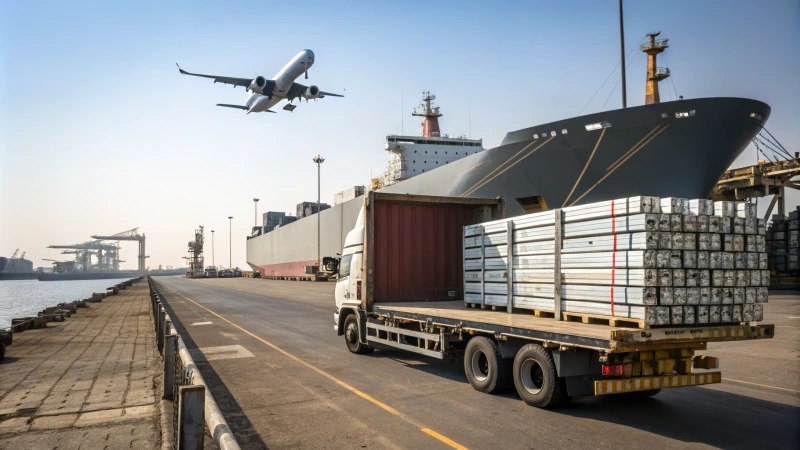
Factors Influencing Transportation Choices
Selecting the appropriate transportation mode begins with assessing several key factors. Consider the distance to the destination and whether speed is crucial. For urgent deliveries, air freight might be the best option, although it is often costly.
| Factor | Consideration |
|---|---|
| Distance | Long distances may favor sea freight for cost-efficiency. |
| Urgency | Air transport offers speed but at a premium cost. |
| Volume | Bulk shipments are typically cheaper by sea or rail. |
Land Transportation for Local Shipments
For domestic or nearby regional shipments, land transportation offers a reliable and flexible choice. Trucks and rail can handle varying sizes of aluminum profiles efficiently.
- Truck Transport: Suitable for shorter distances and offers door-to-door service.
- Rail Transport: Ideal for bulk and heavy profiles but requires careful loading.
Air Freight: Speed Over Cost
Air freight should be considered when delivery time is critical. It’s the fastest mode but also the most expensive.
- Advantages: Rapid delivery, ideal for urgent or high-value shipments.
- Drawbacks: Limited by size and weight, higher costs compared to other modes.
Sea Freight: Cost-Effective for Bulk Shipments
For international shipping of large quantities, sea freight remains the most economical option.
- Advantages: Cost-effective for bulk and heavy shipments; suitable for long distances.
- Considerations: Longer transit times; requires robust packaging to withstand ocean conditions.
Collaborating with Experienced Logistics Providers
Partnering with logistics companies that specialize in metal product transport can greatly enhance your shipping strategy. They offer expertise in packaging and handling practices that minimize risks.
- Benefit: Leverage their experience to navigate complex shipping regulations and logistics challenges efficiently.
Aligning these insights with your specific needs can streamline your logistics process, enhancing both efficiency and product safety while navigating the complexities of international shipping. Engage with experts to further refine your approach to transporting aluminum profiles efficiently.
For more tips on ensuring safe transit, consider exploring resources on packaging methods that cater to aluminum profiles’ unique requirements.
Air freight is the cheapest option for shipping aluminum profiles.False
Air freight is the most expensive due to its speed and urgency.
Sea freight is ideal for long-distance bulk shipments of aluminum.True
Sea freight is cost-effective for large quantities over long distances.
What Role Do Logistics Companies Play in Safe Delivery?
Logistics companies are the backbone of global trade, ensuring goods move safely from point A to B. But what exactly do they do to guarantee safe deliveries?
Logistics companies ensure safe delivery by optimizing packaging, selecting appropriate transportation modes, and managing risks during transit. They also provide tracking solutions and handle customs efficiently to prevent delays.
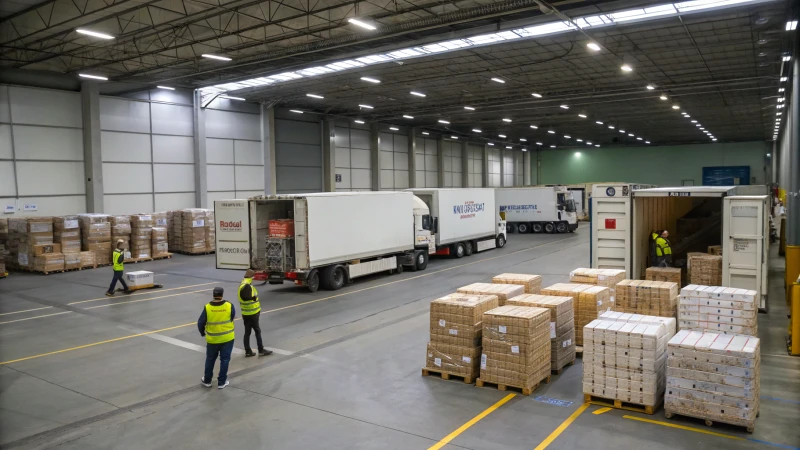
The Importance of Packaging and Handling
Logistics companies play a crucial role in ensuring that products are packaged correctly to withstand the rigors of transit. They employ advanced materials such as shock-absorbent padding and moisture-resistant films, tailored to each product’s needs. Proper handling techniques minimize damage risks during loading and unloading processes.
Selecting the Right Transportation Modes
Choosing the right mode of transport is vital for safe delivery. Logistics firms assess factors like destination, urgency, and product fragility. For instance, perishable goods may require temperature-controlled shipping via air freight, while bulk goods might be better suited for sea freight.
| Transport Mode | Best For | Considerations |
|---|---|---|
| Air Freight | Urgent, high-value items | Costly but fast |
| Sea Freight | Bulk, non-perishable goods | Economical but slower |
| Road Transport | Local deliveries | Flexible but weather-impacted |
Risk Management and Security
To mitigate risks such as theft or damage, logistics companies employ security measures like GPS tracking and secure warehousing. They analyze potential hazards and develop contingency plans to address unforeseen disruptions like strikes or natural disasters. This proactive approach helps maintain delivery schedules and ensures product safety.
Efficient Customs Handling
Cross-border shipping often involves navigating complex customs regulations. Logistics firms streamline this process by preparing all necessary documentation in advance, reducing the risk of delays at checkpoints. Their expertise in customs regulations across different countries can prevent unexpected hold-ups.
By understanding these roles, businesses can better appreciate the value that logistics companies bring to ensuring the safe delivery of their products. From packaging innovations to handling unforeseen challenges, logistics firms are integral to maintaining the efficiency and reliability of global supply chains.
Logistics companies use shock-absorbent padding for all packages.False
Shock-absorbent padding is used based on product needs, not universally.
Air freight is best for urgent, high-value items.True
Air freight is fast and secure, ideal for urgent deliveries.
Conclusion
Effective packaging and transportation of aluminum profiles are crucial for preventing damage. Key strategies include selecting protective materials, ensuring moisture control, and choosing appropriate transport methods.


